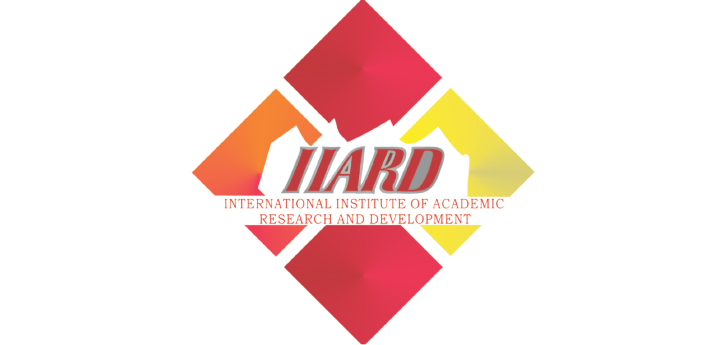Teachers’ Competencies for the Inclusion of Deaf Students: A Critical Review of Literature and Future Directions
Francesca Latino, Francesco Tafuri
Abstract
The effective inclusion of deaf students within mainstream educational settings requires a comprehensive set of teacher competencies that transcend general pedagogical knowledge. This literature review explores the evolving conceptualizations and empirical findings regarding the professional competencies necessary for educators to support the academic, linguistic, and socio-emotional development of deaf learners. Drawing from interdisciplinary research across education, linguistics, disability studies, and inclusive pedagogy, the paper identifies key areas of competence, including bilingual communication skills in both spoken and signed languages, culturally responsive teaching, proficiency in assistive technologies, and collaborative practices involving families and specialized professionals. The review also highlights the systemic barriers that hinder the development of these competencies, such as inadequate teacher preparation programs, lack of ongoing professional development, and limited institutional recognition of Deaf culture as a pedagogical asset. Evidence-based studies underscore that teacher attitudes, linguistic flexibility, and responsiveness to the diverse needs of deaf students significantly impact learning outcomes and classroom participation. Furthermore, the integration of innovative training approaches, including immersive sign language learning and co-teaching models, is emerging as a critical strategy for equipping educators with the tools necessary for genuine inclusion. The paper concludes with recommendations for rethinking teacher education through the lens of equity, accessibility, and linguistic justice. In doing so, it advocates for a paradigm shift that recognizes the education of deaf students not as a matter of accommodation but as a transformative opportunity to enrich the broader educational landscape.
Keywords
References
of deaf and hard-of-hearing students in inclusive settings. Journal of Deaf Studies and
Deaf Education, 7(3), 214–229. https://doi.org/10.1093/deafed/7.3.214
Bat-Chava, Y. (2000). Diversity of deaf identities. American Annals of the Deaf, 145(5), 420–
Bauman, H.-D. L., & Murray, J. J. (2014). Deaf gain: Raising the stakes for human diversity.
University of Minnesota Press.
Cawthon, S. W. (2009). Assessment accommodations for classroom teachers of culturally and
linguistically diverse students with disabilities. Paul H. Brookes Publishing.
Easterbrooks, S. R., & Stephenson, B. (2006). The role of professional development in
improving outcomes for students who are deaf or hard of hearing. American Annals of
the Deaf, 151(5), 476–486.
Florian, L., & Black-Hawkins, K. (2011). Exploring inclusive pedagogy. British Educational
Research Journal, 37(5), 813–828. https://doi.org/10.1080/01411926.2010.501096
Freire, P. (1970). Pedagogy of the oppressed. Herder and Herder.
Golos, D. B., & Moses, A. M. (2011). Developing language-rich preschool classrooms:
Lessons from an emergent sign language and literacy program. Young Children, 66(1),
84–89.
Grosjean, F. (2001). The right of the deaf child to grow up bilingual. Sign Language Studies,
1(2), 110–114.
Harry, B., Kalyanpur, M., & Day, M. (1999). Building cultural reciprocity with families: Case
studies in special education. Paul H. Brookes Publishing.
Lane, H. (2005). Ethnicity, ethics, and the deaf-world. Gallaudet University Press.
Lindsay, G., & McPherson, A. (2011). The impact of teacher training on inclusive education.
International
Journal
of
Inclusive
Education,
15(6),
615–630.
https://doi.org/10.1080/13603110903265033
Luckner, J. L., & Muir, S. (2001). Successful students who are deaf in general education
settings. American Annals of the Deaf, 146(5), 435–445.
Marschark, M., & Hauser, P. C. (2012). How deaf children learn: What parents and teachers
need to know. Oxford University Press.
Marschark, M., & Spencer, P. E. (2010). The Oxford Handbook of Deaf Studies, Language, and
Education (Vol. 2). Oxford University Press.
Mayberry, R. I. (2002). Cognitive development in deaf children: The interface of language and
perception in neuropsychology. Handbook of neuropsychology, 8, 71–107.
Meyer, A., Rose, D. H., & Gordon, D. (2014). Universal design for learning: Theory and
practice. CAST Professional Publishing.
OECD. (2017). Empowering and Enabling Teachers to Improve Equity and Outcomes for All.
OECD Publishing. https://doi.org/10.1787/9789264273238-en
Oliver, M. (1990). The politics of disablement. Macmillan Education UK.
Skliar, C. (1999). The education of the deaf: Between the medical model and the culture of
difference.
Disability
&
Society,
14(2),
239–251.
https://doi.org/10.1080/09687599926314
Skutnabb-Kangas, T., & Phillipson, R. (1995). Linguistic human rights: Overcoming linguistic
discrimination. Berlin: Mouton de Gruyter.
Swanwick, R., & Gregory, S. (2007). Sign bilingual education: Policy and practice. In M.
Marschark & P. E. Spencer (Eds.), Advances in the spoken language development of
deaf and hard-of-hearing children (pp. 291–312). Oxford University Press.
UNESCO. (1994). The Salamanca statement and framework for action on special needs
education. United Nations Educational, Scientific and Cultural Organization.
United
Nations.
(1948).
Universal
Declaration
of
Human
Rights.
https://www.un.org/en/universal-declaration-human-rights
United Nations. (2006). Convention on the Rights of Persons with Disabilities.

